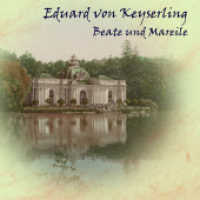- ホーム
- > 洋書
- > ドイツ書
- > Humanities, Arts & Music
- > Linguistics
- > general surveys & lexicons
Description
(Text)
This volume collects a variety of theoretical approaches to and exemplary readings of medieval and early modern practices of commentary from the point of view of Arabic, Latin, Jewish, English, German, and Romance Studies. Since antiquity, commentaries have accompanied sacred, cultural, and literary texts, serving to justify their relevance and canonicity. They have been instruments for the transmission of legal and religious norms and values, as well as purveyors of ancient knowledge which has to be preserved verbatim, and yet be kept open for future communication. At times, the commentary even attains a sovereignty of interpretation that can supersede or push aside any original intentions of the text. Thus, the study of commentary is key to describing aspects of authority, institutionality, creativity, and textual empowerment from a comparative perspective. The articles in this issue highlight the role that the study of commentary can play in a historical understanding of premodern and early modern textuality, epistemology, and mediality. Dieser Band versammelt eine Vielzahl von theoretischen Ansätzen und exemplarischen Lesarten mittelalterlicher und frühneuzeitlicher Kommentarpraktiken aus der Sicht der Arabistik, Latinistik, Judaistik, Anglistik, Germanistik und Romanistik. Seit der Antike begleiten Kommentare heilige, kulturelle und literarische Texte und dienen dazu, ihre Relevanz und Kanonizität zu rechtfertigen. Sie waren Instrumente zur Vermittlung von rechtlichen und religiösen Normen und Werten sowie von altem Wissen, das wortgetreu bewahrt und zugleich offen für zukünftige Nutzungen gehalten werden musste. In manchen Fällen erlangt der Kommentar sogar eine Interpretationssouveränität, die alle ursprünglichen Absichten des Textes ersetzen oder verdrängen kann. So ist das Studium von Kommentaren der Schlüssel zur Beschreibung von Aspekten der Autorität, Institutionalität, Kreativität und textlichen Ermächtigung aus einer vergleichenden Perspektive. Die Beiträge zu diesem Band heben die Rolle hervor, die das Studium von Textkommentaren in einem historischen Verständnis von vormoderner und frühneuzeitlicher Textualität, Epistemologie und Medialität spielen kann.
(Text)








